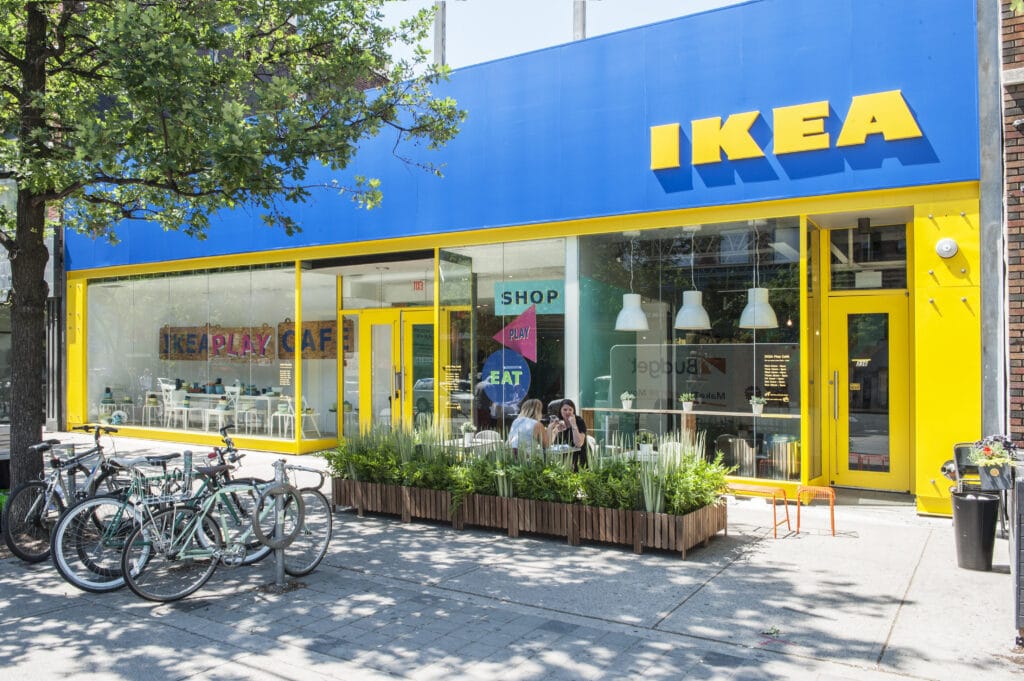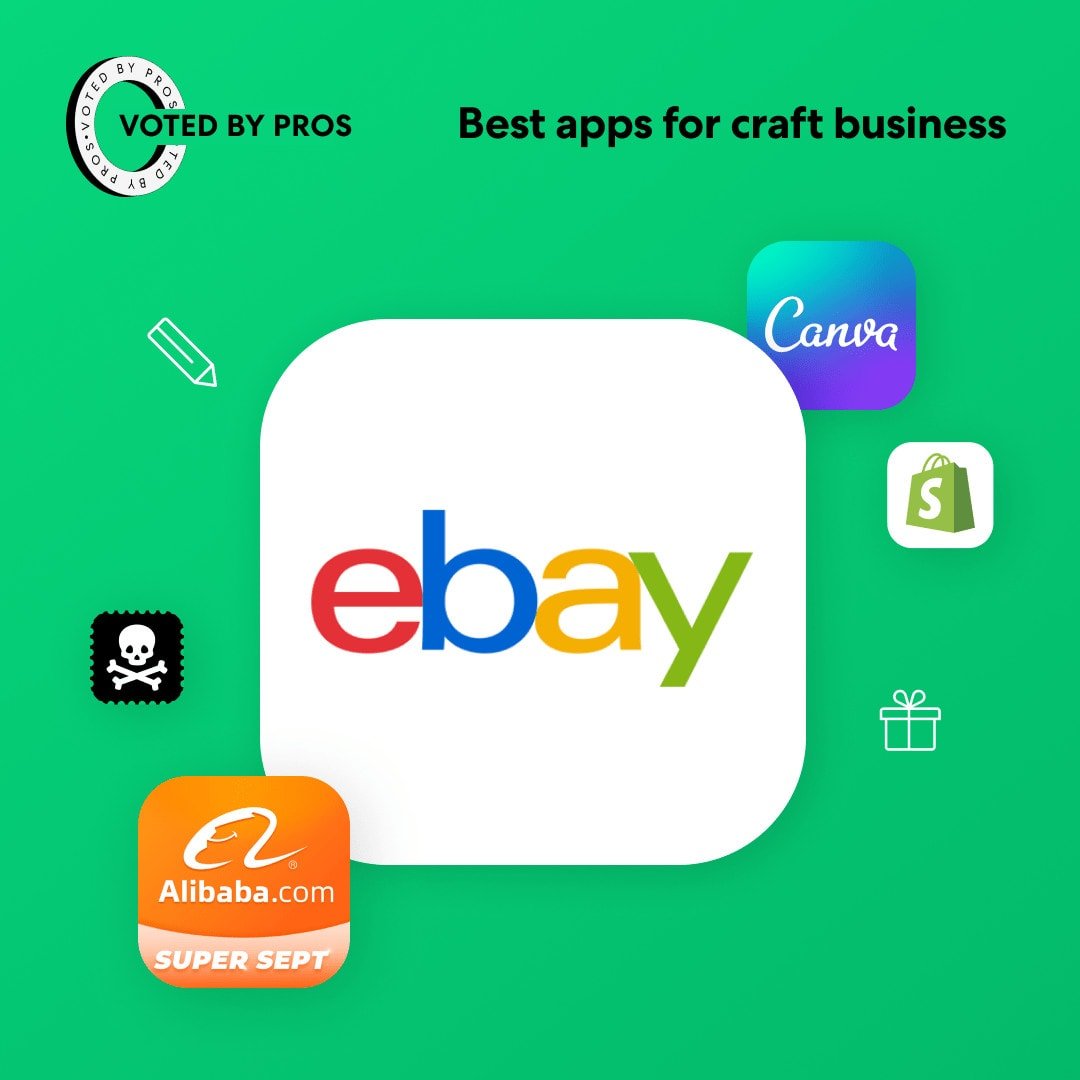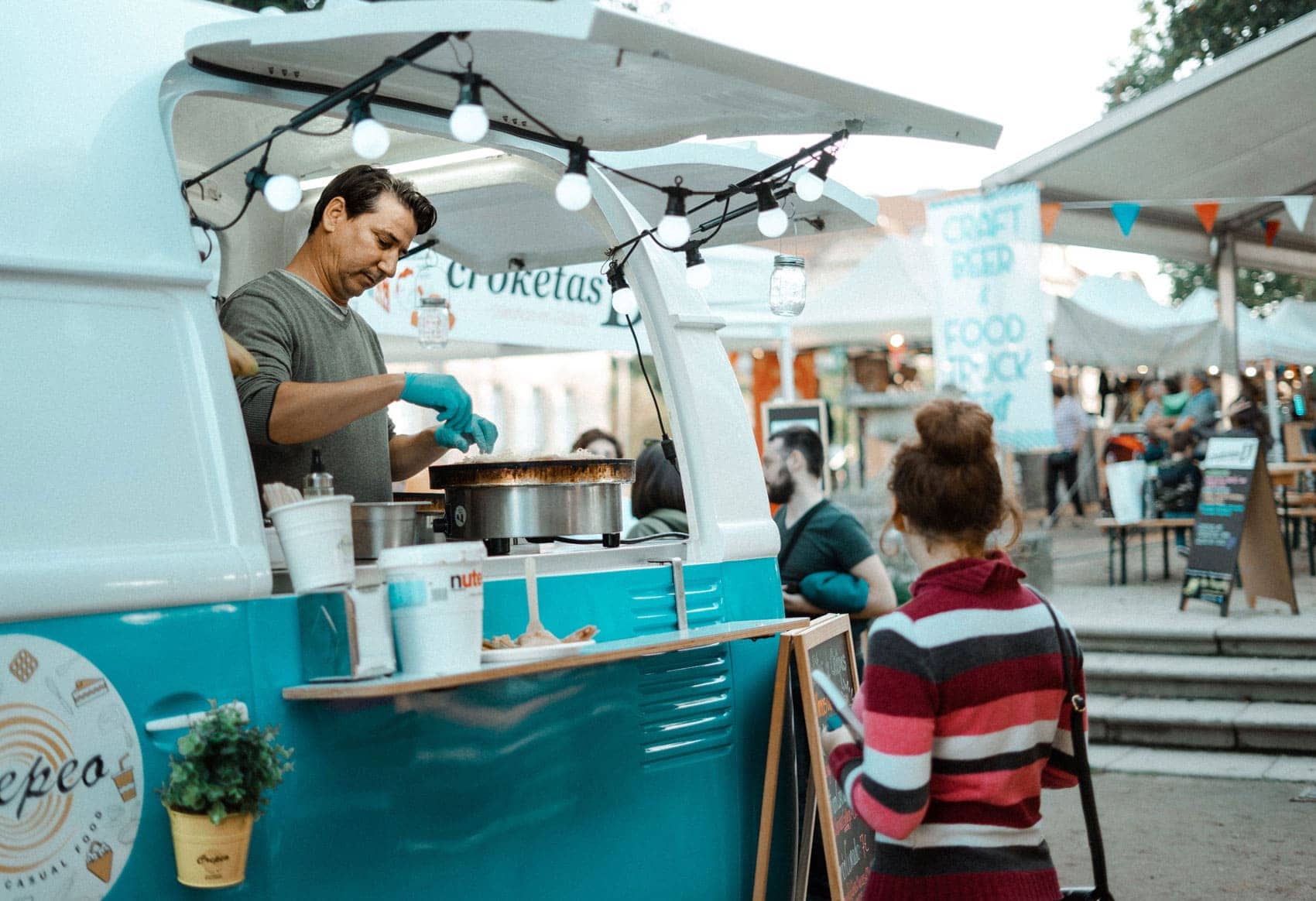Pop-up shops provide a whirlwind of excitement for any business owner. From picking out the perfect venue, to decorating and branding the space, to building buzz on social media and finally opening the doors, these experiences are a unique way to connect with new customers and show them what you’ve got.
The biggest draw for customers is exclusivity.1 By opening a temporary shop, you’re able to offer exclusive products and experiences that can make your customer base feel included in something special. However, 49% of pop-up patrons are in it for curiosity and entertainment.1 Thus, it’s up to you as the pop-up owner to provide an unforgettable experience that will earn you money and keep customers happy.
Pop-up shops aren’t new. It’s common to see seasonal Halloween costume and decor stores appear in empty shops during September and October. However, the trend of temporary storefronts has been on the rise in recent years. For example, an additional thousand2 Halloween shops were opened in 2019 compared to 10 years ago.
And during COVID-19 social distancing protocols, pop-up stores allowed brands to open up a temporary, outdoor or small-scale storefront where social distancing could be easily enforced.
So what’s behind this growing trend? Below, we’ll discuss the growing trend of temporary storefronts — a bubble that isn’t likely to, well, pop.
What is a pop-up shop?
It’s in the name: a pop-up shop is a temporary brick-and-mortar space where brands can connect with customers face-to-face — or, a store that “pops up” for a brief period of time. Typically, brands without a physical storefront decide to host a pop-up shop to give their customers a chance to connect with them in person. However, brands that already have a brick-and-mortar space sometimes also use pop-up shops to advertise a new offering or connect with customers in a brief, informal way.
Why host a pop-up shop?
There are many benefits of hosting a pop-up experience. In the era of COVID, pop-ups in outdoor spaces have helped brands that can’t have a physical indoor space remain connected to their customer base. But even before the onset of social distancing, these shops have helped brands connect, advertise and get their name out there.
A few benefits of pop-up shops:
- Build connections with your existing customers
- Advertise a new product or offering
- Introduce your company to potential new customers
- Allow customers to physically shop at a traditionally online store
- Pique consumer interest via social media or news articles
- Testing the waters before opening up a physical storefront
- Showcase seasonal products and offerings to generate buzz
- Provide a socially distanced, smaller scale retail experience

What makes a pop-up shop successful?
A good pop-up shop is one that will attract customers to your brand and help with name recognition. More than driving revenue, pop-ups provide opportunities to build connections and establish yourself as a member of a community.
So how can you make sure to check all your boxes with your pop-up? It all starts with good branding and a clear goal.
Marketing
When you open your doors, you want customers to be there. Marketing is essential to advertise your brand and drive customers to your shop. More often than not, pop-up shop audiences are generated through social media and word of mouth. A few months or weeks before your event, you’ll want to start posting sneak previews with fun, eye-catching photography, and maybe even an exclusive event hashtag.
Unless you’re a huge brand, you most likely won’t attract the crowds you want without promotion. You can still keep your event surprising and exciting by revealing the location and hours of your shop without giving every detail of the experience away on socials beforehand.
Marketing for your pop-up can benefit from a mix of virtual and physical techniques. A few ways to market your pop-up:
- Paid advertising on Instagram, Twitter and Facebook
- A Facebook event
- A billboard
- Signs at a bus stop
- Flyers in public areas
- Create a hashtag to use on social media
- Take out advertisements in local newspapers and magazines
- Reach out to your email list
These ideas mix the virtual with the physical, allowing for maximum exposure.
Connections with customers
At the end of the day, a pop-up shop can be more than just an opportunity to make extra money. Creating a physical space where customers can experience your products or services and get insight into the company can help create lasting relationships — which means more business and brand awareness.
Connect with customers during your pop-up by making sure each visitor gets personal attention from staff. You can also give them opportunities to sign up for a mailing list or follow your social media accounts while in-store to create a lasting bond.
An accessible location and hours
Finding the right location is crucial. Getting to know the city you’re popping up in can help you determine where it makes the most sense to set up — you’ll want to pick a temporary retail location that has a good mix of foot and car traffic, as well as ample parking. Starting with a “[City Name] + temporary retail space” Google search can get you started finding viable spaces to set up.
A few location options for a pop-up:
- An existing, vacant storefront
- A gallery or event space
- A dedicated pop-up space
- An outdoor mall or park
- An existing store that will let you set up inside
- A mobile van or truck
From there, you’ll want to make sure your hours make sense for your market. If you want to attract business workers, only being open Monday through Friday from 9 to 5 most likely won’t convert. Make yourself available for a range of time schedules depending on whose business you’re looking to score.
A unique experience
While your main goal might be to earn money and build your customer base, the people visiting your popup shop are doing so for the experience. You’ll want to provide something interesting, eye-catching and entertaining for your guests. This will help keep people in your shop, but it will also generate buzz.
You could add an interactive experience, live music or a photobooth with fun props to help people have a good time and spread the word to their friends. Whatever route you take, make sure that your choice of entertainment and intrigue is unique and easy to understand.
A strong WiFi connection
Since social media will help drive the buzz of your pop-up, you’ll want to make sure your guests have a quick and easy time logging on. This will help them share posts, photos and status updates from your event to generate a bigger audience.
In addition, your POS system will most likely be hooked up to WiFi through a portable or mobile service. Having a strong connection to the internet will make sure you’re able to complete transactions quickly and easily, which will save you a headache and save your guests some time.

Photo courtesy of IKEA.
Real pop-up shop examples and lessons from the best
Big brands have used pop-up shops to advertise new products, connect with customers and generate buzz. Let’s break down some successful examples.
Glossier
Makeup brand Glossier established temporary stores throughout the United States to give their customers a physical space to shop apart from the brand’s three physical locations in New York, Los Angeles and London. As Glossier products aren’t available at cosmetic store chains, a majority of the brand’s sales are conducted online. These pop-up shops allowed customers to physically shop for products in a retail space that emulated the brand’s iconic minimalist branding and light pink color scheme.
Lesson learned: Ecommerce stores can use pop-up shops to give their customers a physical space to view their products
IKEA Play Cafe
As part of its mission to make their stores more accessible and fun for everyone, IKEA uses pop-up shops to provide an entertaining and smaller-scale shopping experience than its large warehouse stores provide.
One of the store’s pop-ups, the Play Cafe, focused on the company’s food offerings. Serving up their famous Swedish meatballs, IKEA invited guests to dine and play in their pop-up space. Also on display, however, was the company’s kitchen and dining furniture, gadgets and glassware.
Lesson learned: Base your pop-up shop on one aspect of your company to advertise one of your offerings.
BarkShop Live
People love their pets. At BarkShop Live, Bark & Co. — the makers of the BarkBox subscription dog toy and treats box — allowed dogs to do the shopping for themselves. BarkShop Live provided an open space where visiting dogs could try out different toys. Then, using a special tracking belt synced to the owner’s phone that was put on each dog while they played, owners could learn which toys their dog liked best.
By using technology and their unique idea, BarkShop Live not only provided a fun space for dogs to play, but they were able to give their owners personalized information about their furry friends.
Lesson learned: Technology can help level up your pop-up to make it more interactive and personal.
Pantone Cafe
The Pantone Cafe was a bright, colorful pop-up store that deviated from the company’s typical offering of color guides to serve up snacks and coffees. The pop-up was hosted in a space that was painted in a few of the company’s color swatches, and they designed the building and products with the company’s sleek branding in mind. The menu items were also named after the numerical codes for a few of the company’s colors.
Though the cafe wasn’t directly aligned with the company’s product offerings, it generated buzz and drove traffic to their site. Further, they provided a colorful and social-media-friendly aesthetic that inspired people to photograph and share.
Lesson learned: It’s okay to deviate from your typical product offering to create something unique and shareable.
Penguin Books
Aligning your pop-up with publicized holidays can help generate buzz and assert your company as a thoughtful and influential business. Since more than 50%3 of Gen Z purchasers state that knowing a brand is socially conscious will influence their purchasing decisions, taking a stand for a cause can actually be good for business.
Penguin Books did just that with their International Women’s Day pop-up store, which featured women authors and women-led panels. The bookseller also donated the profits from ticket sales to a women’s aid center.
Lesson learned: Aligning your pop-up with a holiday or cause can help generate positive press.
A pop-up shop is an exciting way for a brand to build their audience and showcase their offerings — but they’re also fun! Before diving into any retail experience, temporary or permanent, you’ll want to make sure you’ve got the business insurance to handle whatever comes your way. Read on for more infographic tips.

Sources:











